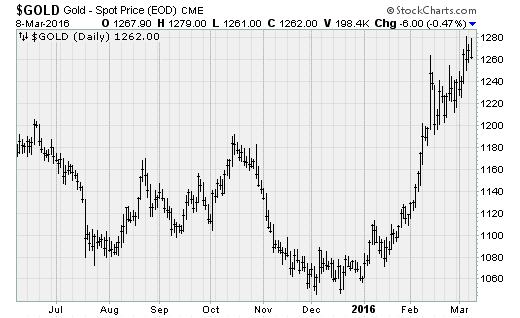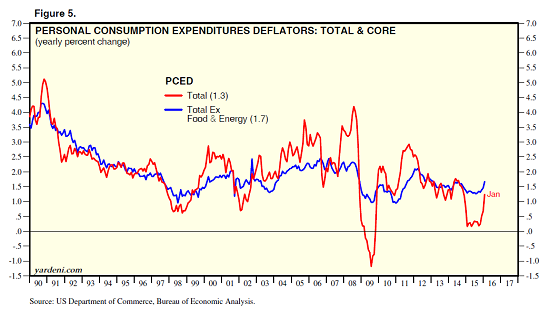What's next for gold?
Gold has been a hot commodity so far this year. But will it last?
The yellow metal is up more than 19 percent and has recently tested the $1,280-an-ounce level for the first time since early 2015 (chart below). In comparison, the Dow Jones industrials index is down 2.7 percent for the year to date. The tech-heavy Nasdaq Composite -- which features one-time momentum favorites like Apple (AAPL) -- fares even worse: It's down 7.2 percent.
A number of factors are fueling gold's rise. The recent cooling in the U.S. dollar. Financial volatility at the start of the year. Early evidence of rising inflation. Physical metal shortages in the futures market. And the recent experiment with deepening negative interest rates in Europe and Asia as overseas central banks respond to recent vulnerabilities with even more aggressive monetary policy stimulus.
Above all, though, inflation dynamics should keep gold pushing higher as crude oil looks set to stabilize and the U.S. labor market tightens.
Ed Yardeni at Yardeni Research notes that the Federal Reserve's preferred inflation measure -- the core Personal Consumption Expenditures Deflator -- increased to 1.7 percent in February up from a recent low of 1.3 percent in October (chart below). That's very close to the Fed's 2 percent target and suggests that factors like rising housing costs and an ongoing decline in the unemployment rate are lifting the general price level -- both in a "cost push" (as businesses try to pass on higher unit labor costs) and "demand pull" (from lower rental vacancies, for instance).
At the same time, Fed policymakers have recently been voicing increasing worry about the potential risk of expectations about prices -- or where people believe inflation is headed -- from low energy costs. This suggests that despite the firming up of core, or ex-energy, inflation measures, the Fed is likely to hold off on any further interest rate hikes until the second half of the year as it waits for hard evidence that that U.S. economy is bouncing back.
If so, that means the central bank could potentially fall behind the curve on inflation because monetary policy operates with a lag of around nine months. It takes time for changes in interest rates to percolate through the financial system into loan rates, affecting credit-fueled purchases and, ultimately, business revenues.
Conformation of this should come courtesy of the Fed's updated Summary of Economic Projections, or "dot plot," at its next policy announcement a week from today, on March 16.
Higher inflation and a dovish Fed? That's a golden recipe for success for precious metals investors.


